
Structured Data: an SEO gem hiding in plain sight!

The world of SEO changes daily. What worked 10 years, even 10 months ago, may not work now. One SEO practice that isn’t going away anytime soon is structured data.
What is structured data?
Structured data is code added to your website (not visible to users) that is written in a way that computers will understand. As humans, we can look at a web page and fully understand what we’re seeing just by reading the headings and looking at images. Computers cannot read website content like we can. They need translators to translate and sort the information being presented.
This is where structured data comes in. By adding this type of code or “language” to your website, you are helping computers and search engines better understand your content. Once they understand your content, they are more likely to showcase that content in search results. These special features in search results are called “rich results.”
What are rich results?
Rich results, also known as rich snippets, are additional bits of content added to search result pages. They are more visually appealing than regular results and help provide users with additional information so they don’t have to do any more digging for their answers.
Examples of rich results:
There are several types of rich results that we encounter every day. Some are more common than others. Here are some of the most common rich results:
Recipe:
You’re probably most familiar with the recipe rich result which appears when you search for phrases like “chocolate chip cookie recipe.”

News:
Another commonly used rich result is for news stories. These are found typically by searching for “news” or by searching for popular topics with recent news articles.
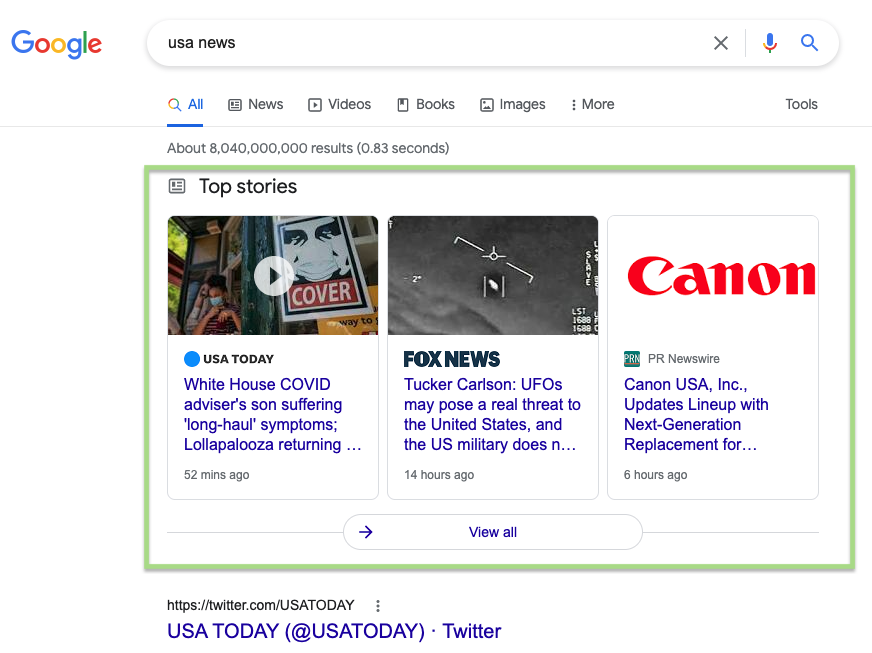
Video:
A great addition to structured data is video rich results. This type of information lets you segment and highlight specific parts of a video and allows users to jump to the part they need.

Knowledge panel:
When you search for major companies, organizations, or famous people oftentimes you will see what’s called a knowledge panel appear to the right of search results. This acts as a profile that gives you highlighted information about what you are searching for.
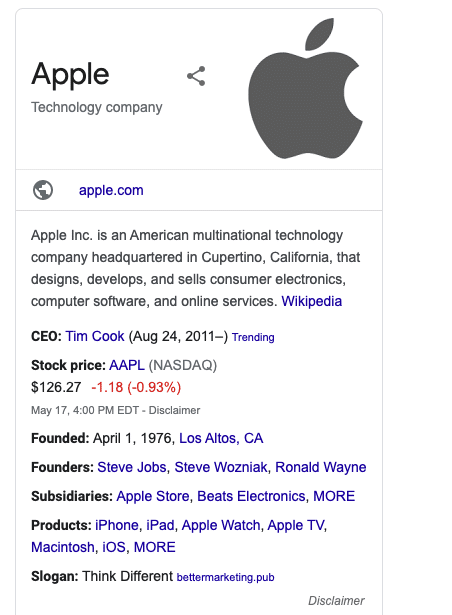
Breadcrumbs:
Breadcrumbs are little navigation tabs, commonly found on website pages themselves, that represent a site’s hierarchy. With structured data, these breadcrumbs are visible on search results.

FAQs:
This type of rich result takes frequently asked questions found on your website and adds them to the results page.
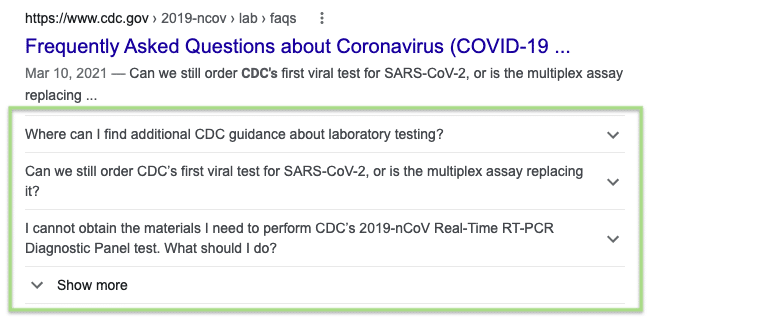
Datasets:
Datasets show popular information such as statistics and other data in the form of a table on result pages, making it more visually appealing and easy to use.
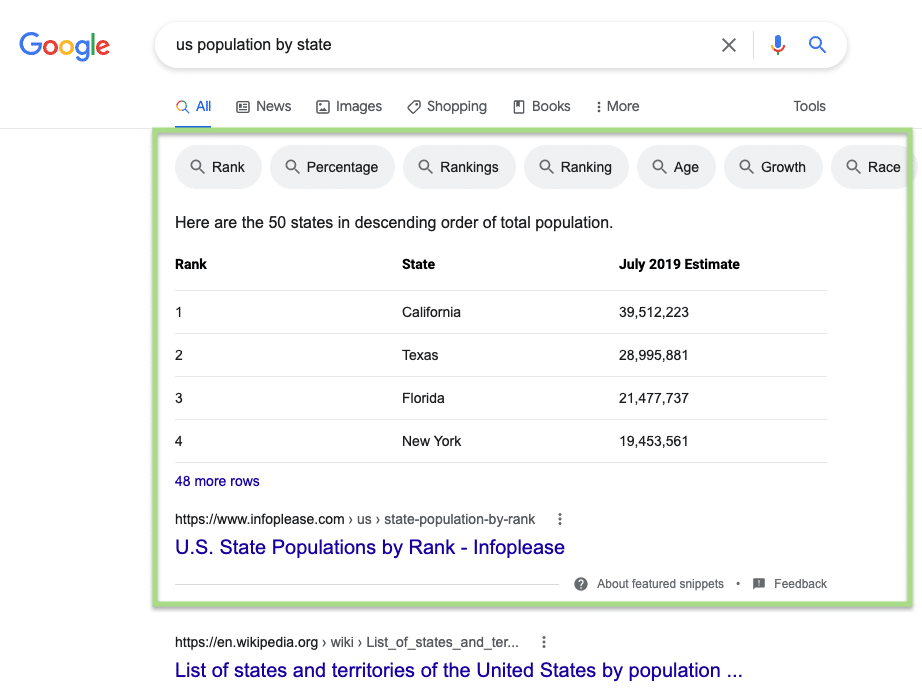
Products:
These results give more detailed information about products such as size, capabilities, reviews, price, etc.

Sitelink search box:
This allows users to search for specific pages or content in your site. It can also highlight some popular or common pages people search for below the search bar
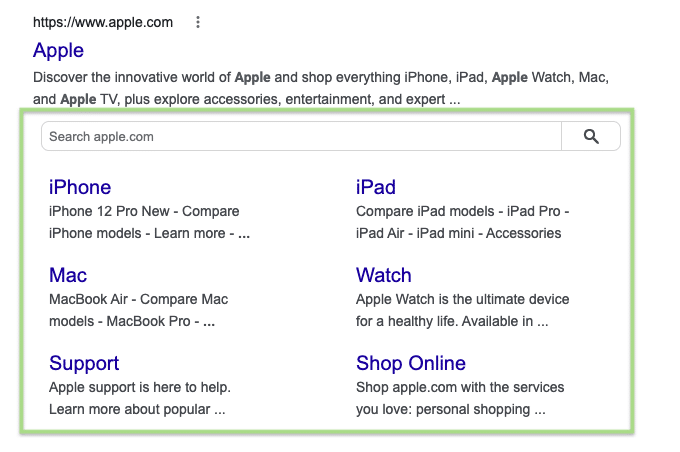
Take a second and go to Google. Type anything you want into the search bar and see what rich results you find!
Why do these features exist?
Search engines are constantly trying to provide the best answers and solutions to users’ questions or search queries. By providing these answers in a quick, easy to understand manner such as these snippets, they encourage users to come back for future queries.
What does this mean for my business?
A recent study by SEMrush found that out of 500 major US companies, 56% of them did not have structured data on their websites.
While this is only a small sample of all the websites in existence, it still highlights the fact that several companies to this day are not using structured data.
As a business, structured data helps you not only take up more real estate on results pages but you appear as an authority on the topic at hand. You are also providing users with valuable information in a more enticing way than your competition. All of these combined makes your content more “clickable.”
Think of it this way, structured data leads to rich results, rich results lead to more space on search result pages, more space means more chances that your content gets clicked over your competitors.
So that other 44% percent of companies from the previously mentioned study have a huge leg up on their competition.
Note* Structured data and rich results are NOT official ranking factors with Google and other search engines. However, they can improve your click through rate (the amount of times your content gets clicked) which can signal to Google that your content is more relevant and more popular than what’s already out there. Eventually, this can lead to higher rankings.
Local Business Rich Results:
A very common practice for local businesses is to add LocalBusiness structured data to your site. You can add this code to your homepage to let Google know that you are a local business and your content should be shown to local customers. For example, if your business is in Louisiana and you want to be shown to customers all throughout the state, then under ServiceArea you will include “Louisiana.” This tells Google to show your content to those living in or searching about Louisiana. LocalBusiness structured data allows you to add your official business name, logo, address, hours of operation, service area as mentioned, contact information, social media profiles, and more!
How can I add structured data to my website?
This all probably seems very complicated and technical. The good news is that it can be very simple and straightforward. Here are a few ways you can go about adding structured data to your website:
Manually: You can “markup” (add code) to your website by using schema.org. There, they will instruct you on the best ways to add the specific code you want to your site.
Plugins: In every digital marketer’s tool belt are an assortment of handy plugins. Our personal favorites are Yoast & Schema & Structured Data for WP & AMP. You can also find more on WordPress.org.
Note: Be sure to double check your structured data with these validation tools:
- Rich Results Test
- Schema.org Validator
- Google Search Console
Work with an SEO/digital marketing agency: Not everyone has time to sit down and figure all of this out, especially when they are trying to run a business. If you are looking for a partner to handle this for you – don’t be afraid to reach out! Our marketing team at Firefly can help you navigate the SEO world with ease. Feel free to contact us at any time!
The best part. . .
Finally, the very best part about structured data is whatever you add to your site (once tested) works on every major search engine. This is all thanks to the combined efforts of four major search engines who came together to create a single library of information: schema.org. No need to worry about writing one way for Bing and another way for Google. It all works the same way!








Get Social